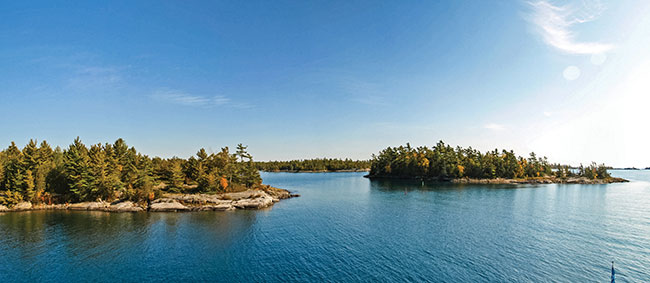
Features
Environment
Guest Column
Keeping the Great Lakes great
The drainage industry can play a key part in the quality of the water in the Great Lakes.
July 12, 2021 By Jacqui Empson-Laporte
 Photo credit: © Kar-Man / Adobe Stock.
Photo credit: © Kar-Man / Adobe Stock.
The Great Lakes are the largest system of fresh surface water on the planet, containing about 21 percent of the total global resource. The Great Lakes basin covers an area of more than 765,000 square kilometres (295,000 square miles), and is home to 39 million people.
You can imagine that there are many governments, environmental non-government organizations (ENGOs), foundations and individuals looking to protect the Great Lakes, and to restore what we have damaged. That being said, anywhere that is home to 39 million people is likely to experience challenges, even if all the best management practices are adopted.
Priorities and actions can occur at different levels, ranging from international to field scale.
At the international scale is the Great Lakes Water Quality Agreement (GLWQA), an agreement between Canada and the United States, first signed in 1972. The agreement identifies shared priorities and coordinates actions to restore and protect the chemical, physical and biological integrity of the waters of the Great Lakes.
The Great Lakes Water Quality Agreement promotes remedial action in areas of concern where the lakes have become significantly impaired for normal use; lakewide management and science; as well as targeted commitments to address specific environmental concerns related to water quality, including aquatic invasive species, climate change, vessel discharges, nutrients and chemicals.
The Great Lakes Water Quality Agreement commits Canada and the U.S. to prepare and issue Lakewide Action and Management Plans (LAMPs) for each Great Lake every five years. The 2017 to 2021 Lake Huron Lakewide Action and Management Plan sets general objectives including: to be a safe, high quality source of drinking water; allowance for unrestricted swimming and other recreational uses of the lake; and to be free from nutrients that promote unsightly algal or toxic blooms.
The actions that will be taken all focus on specific areas around the lake, particular problems to address and the impacts of different land uses.
This is still at a relatively high level (provincial or state level), but there is a key role for the drainage industry to play.
Stormwater runoff and management is identified as one of the threats to water quality. Nutrient levels are highest in nearshore waters near stream mouths that drain urbanized or agricultural areas. Phragmites is an aggressive, invasive species that outcompetes native vegetation and is a nightmare for municipal drainage.
That brings us to the field level. The drainage industry can play a key role in managing water during storm events; implementing designed erosion control features to reduce topsoil and nutrient loss and reintroducing wetlands in strategic areas to retain water.
We can look at best management practices at improving the crop yields for the farmers, but we can also put these actions into the bigger picture. As an industry sector, we can encourage innovation in drainage technologies, adoption of best management practices, and partnerships with agriculture to improve water quality.
The final level is at the individual level. Fundamentally, it will take all of those 39 million people, to take whatever actions they can, to achieve cumulative environmental benefit. It also requires patience, as “we” (individuals or government) won’t fix complex water quality issues overnight.
The drainage industry has an opportunity to provide input into actions the industry can take in the next Lake Huron LAMP, which is scheduled for completion by the end of 2021. Perspectives on the environmental conditions, issues, or concerns about Lake Huron that should be considered in the development of the Lake Huron LAMP, and any suggestions on actions or approaches that could be taken to address them.
While the formal public consultation period may be over by printing, I would encourage the industry to respond anyway. You can find more information at www.binational.net/2021/03/16/2022-2026-lake-huron-lwam/
You can find the 2017 to 2021 Lake Huron LAMP at: www.binational.net/wp-content/uploads/2018/04/2017-2021_Lake_Huron_LAMP.pdf
Print this page